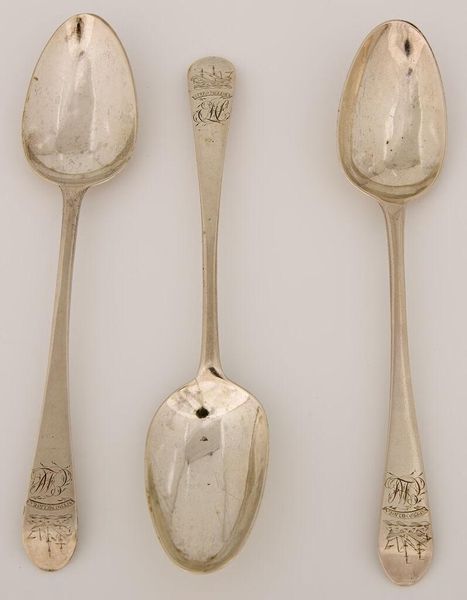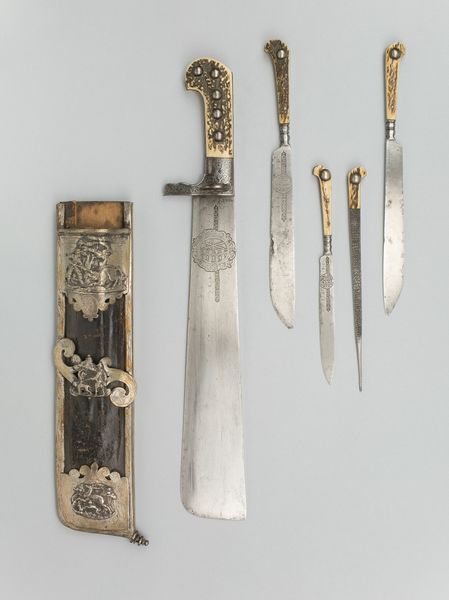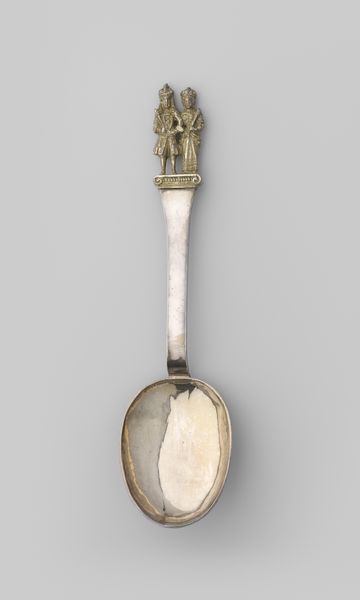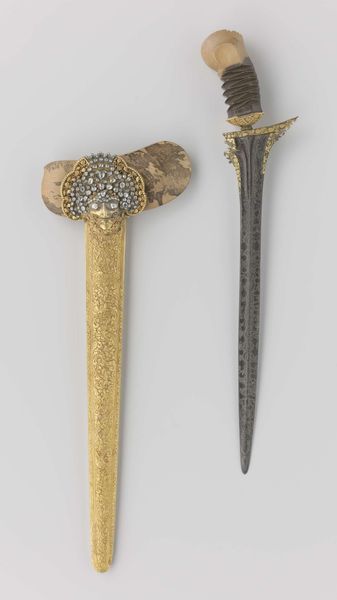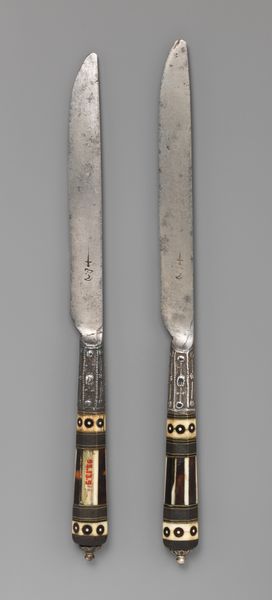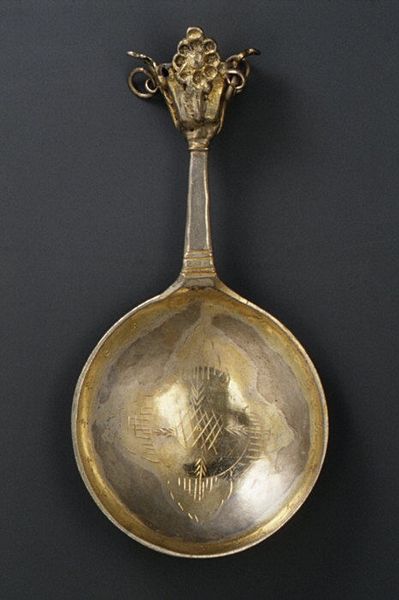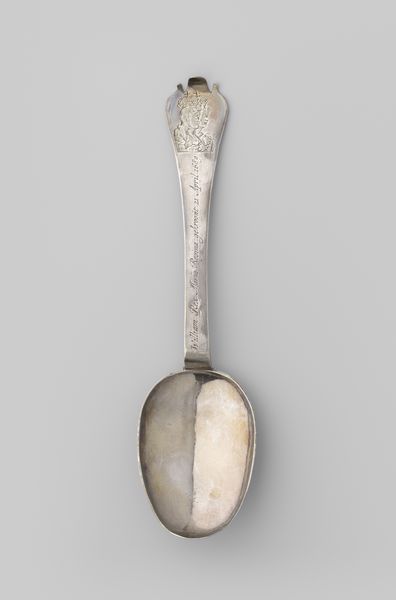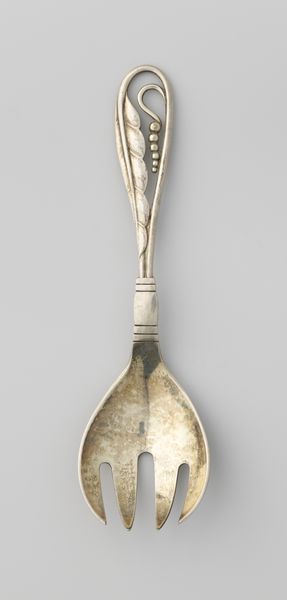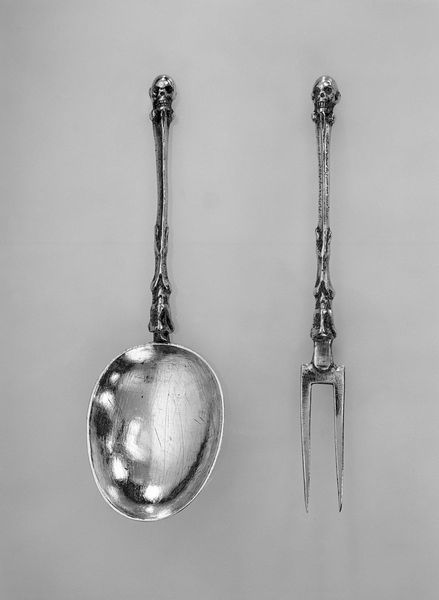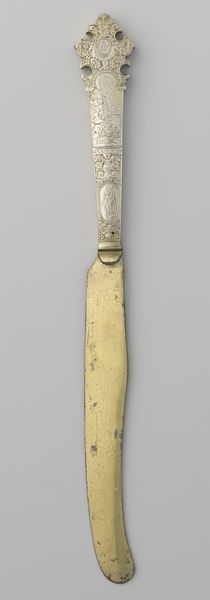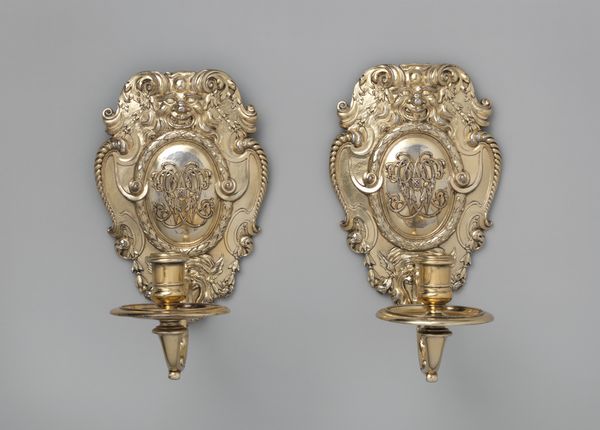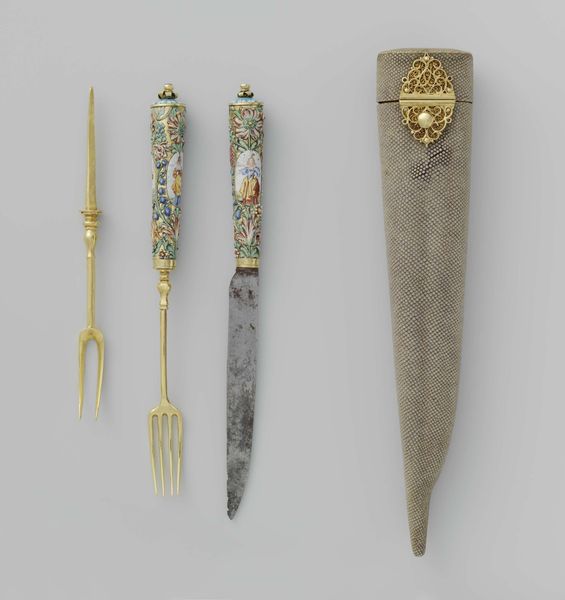
Dimensions: Length (knife): 10 in. (25.4 cm); Length (fork): 7 in. (17.8 cm); Length (spoon): 7 in. (17.8 cm)
Copyright: Public Domain
Editor: We’re looking at “Knife, fork, and spoon” crafted in the 19th century by Elkington & Co. These bronze pieces are currently housed at the Metropolitan Museum of Art. I'm struck by the opulence of everyday objects, how each handle is crowned with tiny figures. What do you make of this set? Curator: The presentation elevates these basic utensils into potent signifiers of social status. The use of bronze and intricate figural work suggests a wealthy patron commissioning these pieces, likely for display as much as for actual use. Consider the burgeoning industrial revolution of the 19th century; what did possessing such elaborate handcrafted objects communicate to their owner's social circle? Editor: So, it's about more than just eating, right? Curator: Exactly. Objects like these played a critical role in establishing and reinforcing social hierarchies. Dining, in particular, became highly ritualized, with specific silverware sets signaling refined taste and economic power. Think of it as a performance. What’s on the table, is a political statement. Editor: That makes sense. I was only thinking about their beauty, but now I realize these are historical artifacts that communicate social values, of status and class, like political billboards for the wealthy! Curator: Precisely! And analyzing them allows us to interpret the social landscape of the time, and perhaps our own contemporary society.
Comments
No comments
Be the first to comment and join the conversation on the ultimate creative platform.
